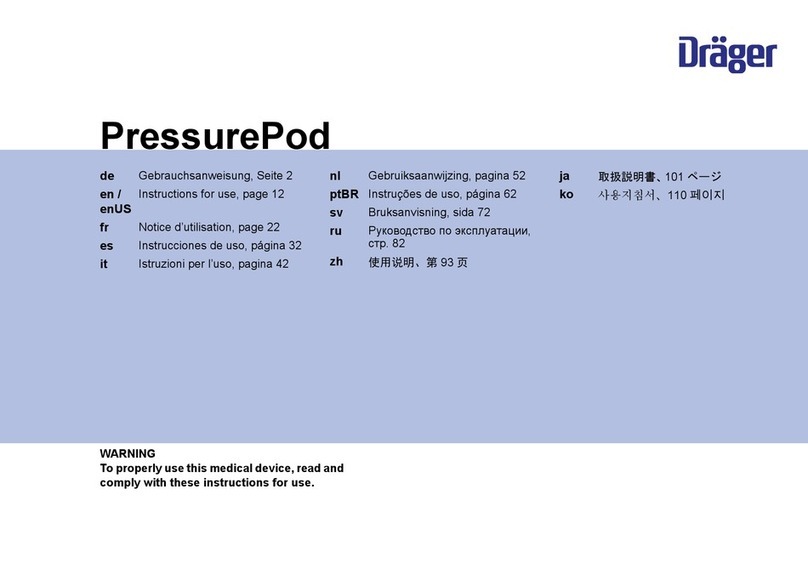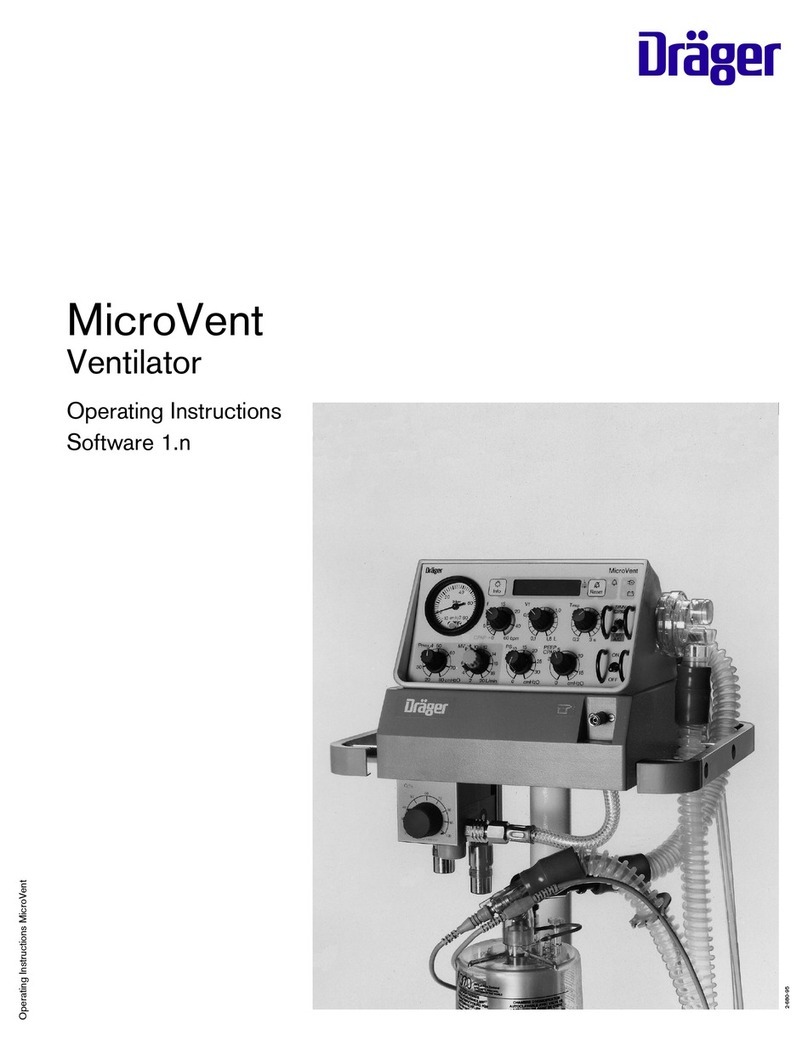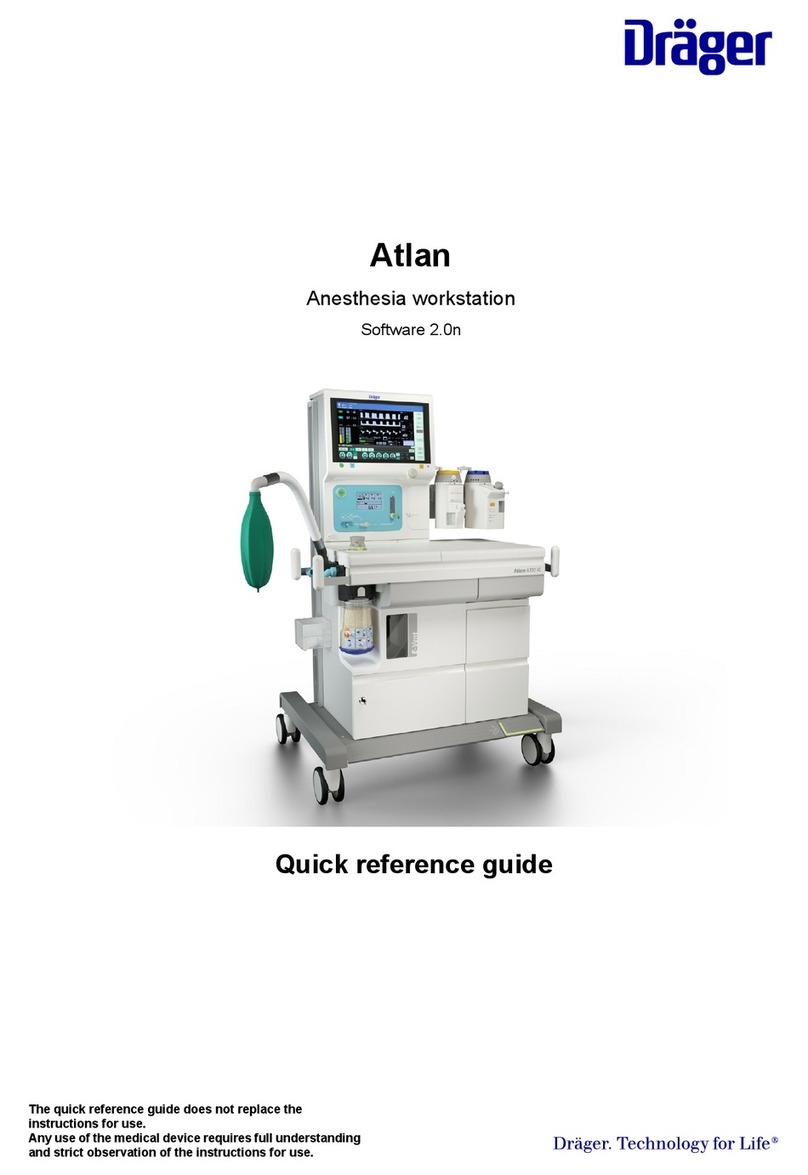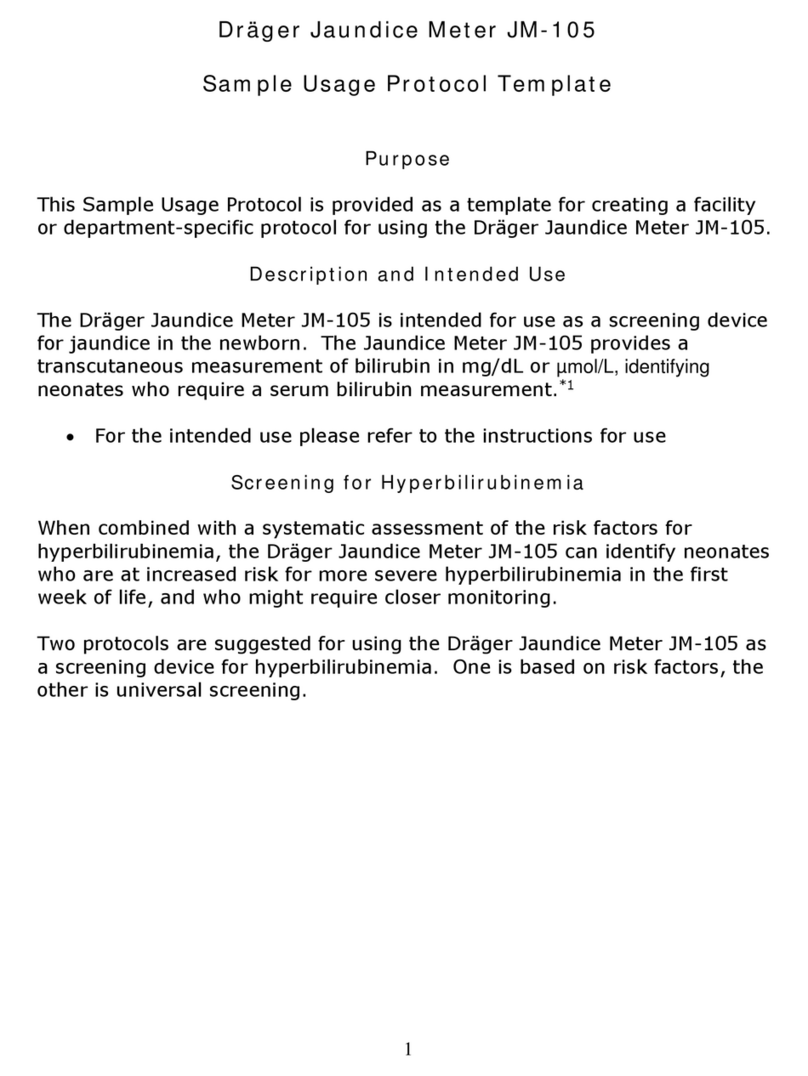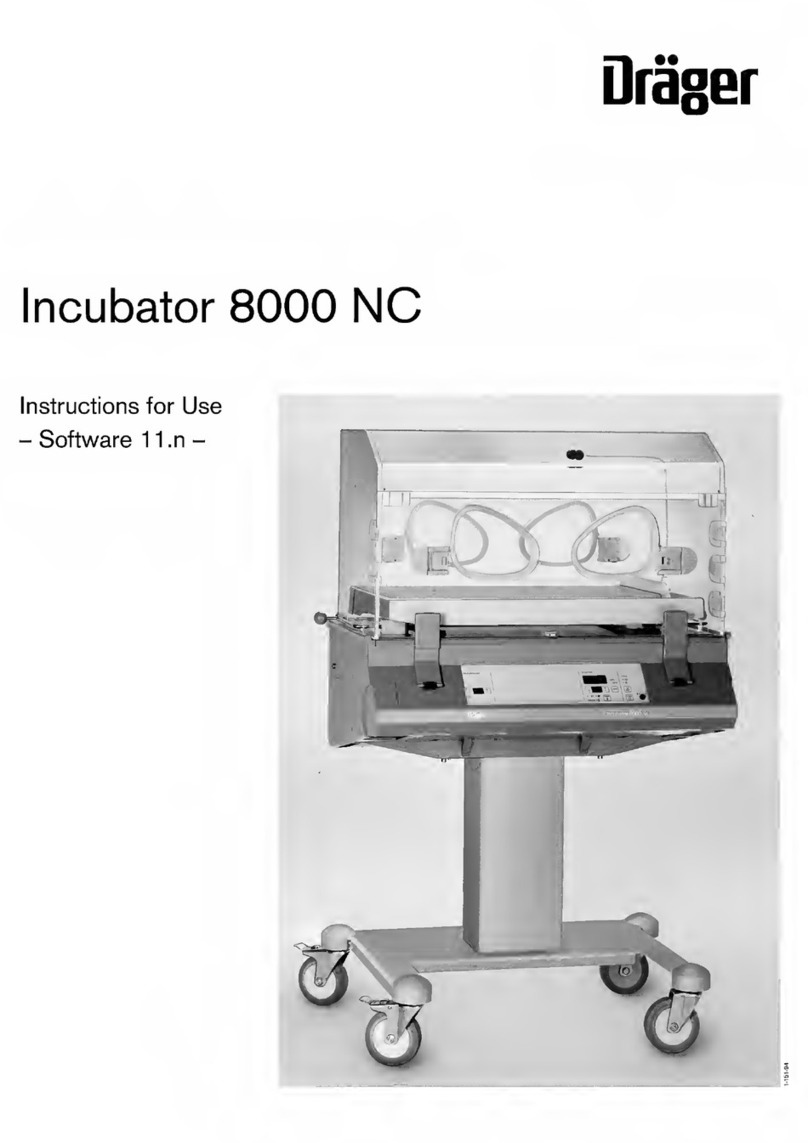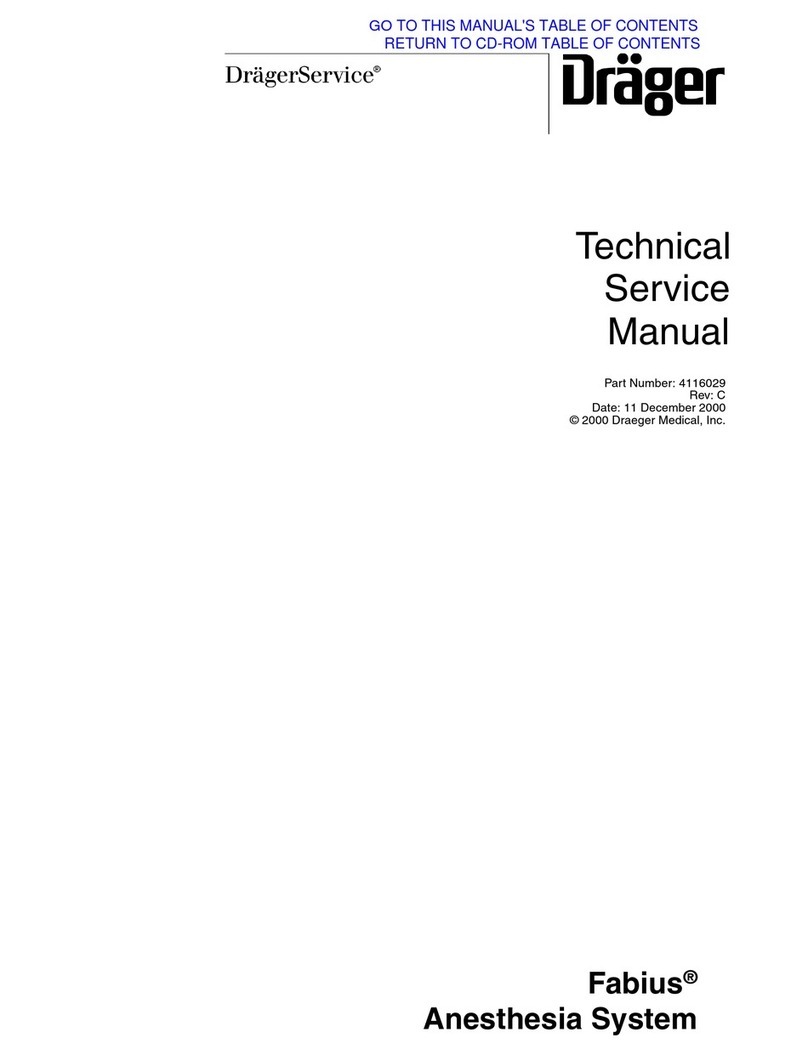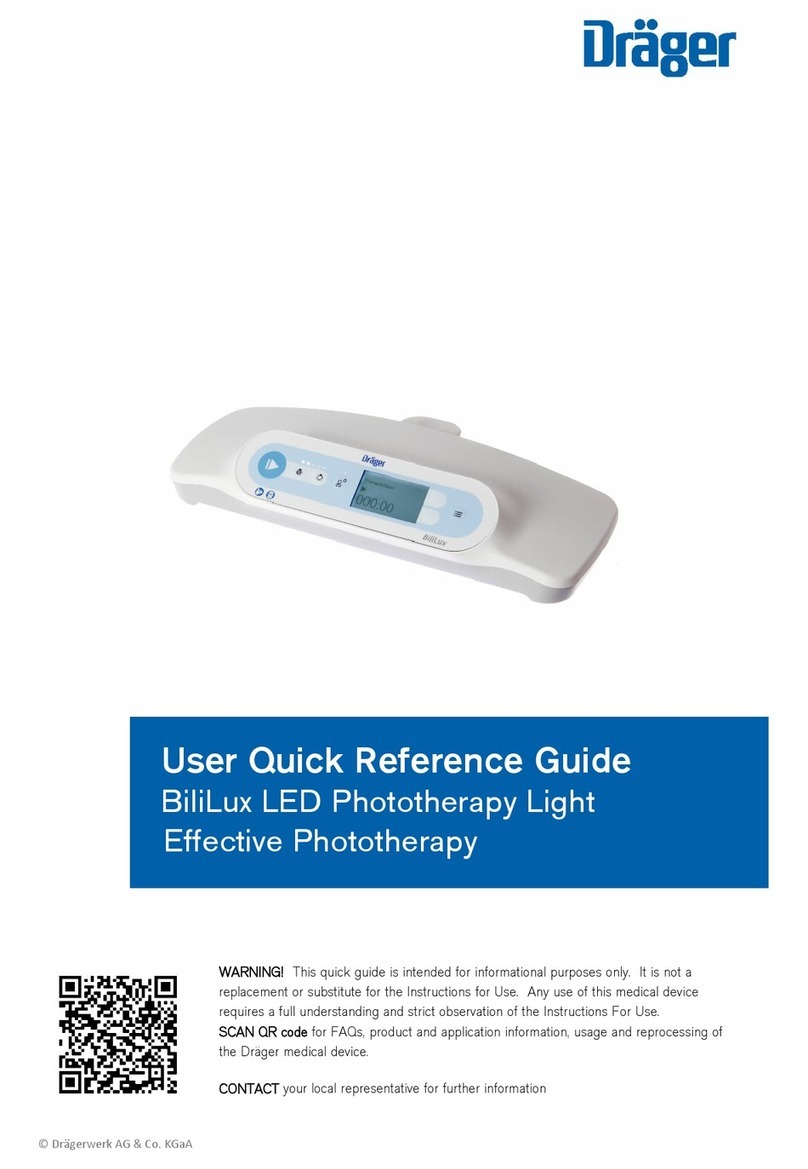
For Your Safety and that of Your Patients
Definition of target groups
5
Connection to other devices
Device combinations approved by Dräger (see Instructions for
Use of the individual devices) meet the requirements of the
following standards:
– IEC 60601-1 (EN 60601-1st, 2nd Edition)
Medical electrical equipment
Part 1: General requirements for safety
– IEC 60601-1-1 (EN 60601-1-1)
Medical electrical equipment
Part 1-1: General requirements for safety
Collateral standard: Safety requirements for medical
electrical systems
– IEC 60601-1-2 (EN 60601-1-2)
Medical electrical equipment
Part 1-2: General requirements for safety
Collateral standard: Electromagnetic compatibility;
Requirements and tests
– IEC 60601-1-4 (EN 60601-1-4)
Medical electrical equipment
Part 1-4: General requirements for safety
Collateral standard: Programmable electrical medical
systems
If Dräger devices are connected to other Dräger devices or
third-party devices and the resulting combination is not
approved by Dräger, the correct functioning of the devices may
be compromised. The owner is responsible for ensuring that
the resulting system meets the requirements of the applicable
standards.
Strictly observe Assembly Instructions and Instructions for Use
for each networked device.
Patient safety
The design of the medical device, the accompanying docu-
mentation, and the labeling on the medical device are based
on the assumption that the purchase and the use of the
medical device are restricted to professionals, and that certain
inherent characteristics of the medical device are known to the
user. Instructions and WARNING and CAUTION statements
are therefore largely limited to the specifics of the Dräger
medical device.
These Instructions for Use do not contain references to various
hazards which are obvious to professionals who operate this
medical device as well as references to the consequences of
medical device misuse, and to potentially adverse effects in
patients with different underlying diseases. Medical device
modification or misuse can be dangerous.
Patient monitoring
The user of the medical device is responsible for choosing suit-
able monitoring that provides appropriate information about
medical device performance and the patient's condition.
CAUTION
Risk of patient injury.
Do not make therapeutic decisions based solely on individual
measured values and monitoring parameters.
Patient safety may be achieved by a wide variety of means
ranging from electronic surveillance of medical device perfor-
mance and patient condition to simple, direct observation of
clinical signs.
The responsibility for selecting the best level of patient moni-
toring lies solely with the user of the medical device.
Functional safety
The essential performance characteristics consist of a
controlled and monitored air-conditioning of the incubator inte-
rior with user-defined settings for the monitoring functions.
– Air temperature
– Relative humidity
–O
2 enrichment (optional)
or, if a set limit is exceeded, an appropriate alarm. The medical
device is equipped with basic safety features to reduce the
possibility of patient injury while the cause of an alarm is reme-
died.
Information on Electromagnetic Compatibility
General information on electromagnetic compatibility (EMC)
according to international EMC standard IEC 60601-1-2:
Medical electrical equipment is subject to special precautionary
measures concerning electromagcompatibility (EMC) and must
be installed and put into operation in accordance with the EMC
information provided on page 139.
Portable and mobile RF communications equipment can affect
medical electrical equipment.
WARNING
Do not connect connectors with an ESD warning
symbol and do not touch the pins of such
connectors without implementing ESD protec-
tive measures. Such protective measures may include
antistatic clothing and shoes, touching a ground stud
before and during connection of the pins, or using elec-
trically insulating and antistatic gloves. All relevant
personnel must be instructed in these ESD protective
measures.
WARNING
Do not use skin temperature control on children who are
in a state of shock, or have fever! Skin temperature is
considerably higher than usual. The control function
would overcool the incubator, resulting in the risk of
hypothermia.
WARNING
Only use the integrated scale to determine the weight of
the patient.
Failure to follow the Operating Instructions can lead to
severe inaccuracies in measuring the patient’s weight.
To safeguard critical therapeutic decisions based on the
patient’s weight, the weighing result should be checked
against a reference measurement on an external scale.






